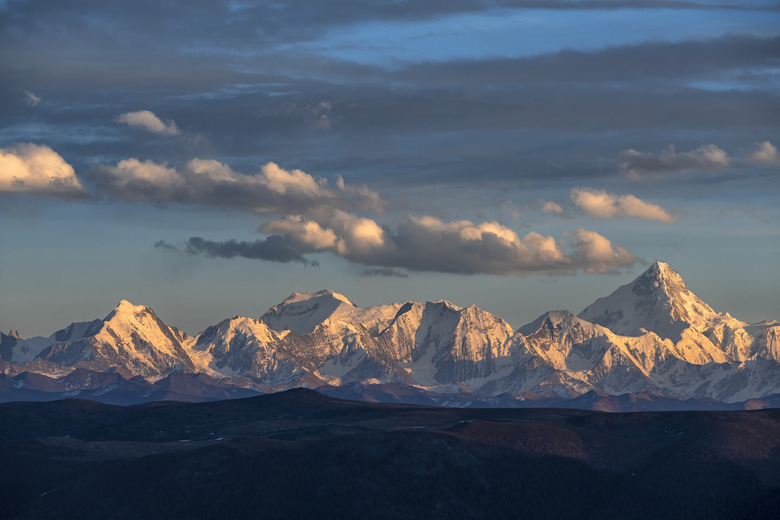The Effects Of Topography On The Climate
The effects of topography on the climate of any given region are powerful. Mountain ranges create barriers that alter wind and precipitation patterns. Topographical features such as narrow canyons channel and amplify winds. Mountains and plateaus are exposed to the cooler temperatures of higher altitudes. The orientation of mountains to the sun creates distinct microclimates in areas such as the Alps, where entire villages remain in the shade for most of the winter season.
Topography Affects Rain and Snowfall
Topography Affects Rain and Snowfall
Mountains play an important role in precipitation patterns. Topographic barriers such as mountains and hills force prevailing winds up and over their slopes. As air rises, it also cools. Cooler air is capable of holding less water vapor than warmer air. As air cools, this water vapor is forced to condense, depositing rain or snow on windward slopes. Mountains in the Western United States such as the Sierra Nevadas trap moisture traveling off the Pacific Ocean on their western flanks, where otherwise it might have passed unimpeded. This creates an effect known as a rainshadow on their leeward (protected) sides, where the air contains very little moisture. Most of the world's great mid-latitude deserts are located in rainshadows.
Topography Creates Distinctive Regional Winds
Topography Creates Distinctive Regional Winds
Mountain barriers also create and funnel regional winds, an important element of climate. As wind descends the leeward slopes, the air compresses, becoming more dense and warm. Strong winds can result, such as the powerful and unseasonably warm Chinook winds that flow down the eastern side of the Rocky Mountains. In arctic regions, extremely dense dry air is pulled off the edges of ice sheets by gravity. These forceful rushing winds are known as katabatic or gravity winds. Mountain passes also act as natural funnels and increase wind speeds. In California, Santa Ana winds blowing off the deserts are enhanced by these breaks. Wind blows more strongly when forced by topography through a narrow opening, and many wind farms can be found in these locations.
Higher Elevations and Cooler Temperatures
Higher Elevations and Cooler Temperatures
Land at higher elevations, such as mountains or plateaus, are naturally cooler due to a phenomenon known as the environmental lapse rate. First observed by the explorer and naturalist Alexander von Humboldt, air cools at 3.5 degrees Fahrenheit for every 1,000 feet of elevation gain. This is the equivalent of traveling hundreds of miles north, and creates a complex Highland climate with great diversity. In America's Southwest, deserts lie at the base of mountains that are topped with great Ponderosa pine forests because of the effects of elevation.
Orientation of Topography and Microclimates
Orientation of Topography and Microclimates
The orientation of slopes in relation to the sun has a profound effect on climate. In the northern hemisphere, south-facing slopes are sunnier and support entirely different ecological communities than north-facing slopes. The south side of a mountain may experience spring conditions weeks or even months ahead of its north side. Where year-round snow or glaciers exist, they are nurtured by the shade provided by north- and west-facing slopes. In mountainous regions such as the Alps in Europe, entire villages may be cast in shade for months in winter, only to emerge again in the spring. In such communities, it is common to have a holiday to mark the reappearance of the sun.
Cite This Article
MLA
Nels, Janet. "The Effects Of Topography On The Climate" sciencing.com, https://www.sciencing.com/the-effects-of-topography-on-the-climate-12508802/. 22 November 2019.
APA
Nels, Janet. (2019, November 22). The Effects Of Topography On The Climate. sciencing.com. Retrieved from https://www.sciencing.com/the-effects-of-topography-on-the-climate-12508802/
Chicago
Nels, Janet. The Effects Of Topography On The Climate last modified March 24, 2022. https://www.sciencing.com/the-effects-of-topography-on-the-climate-12508802/
